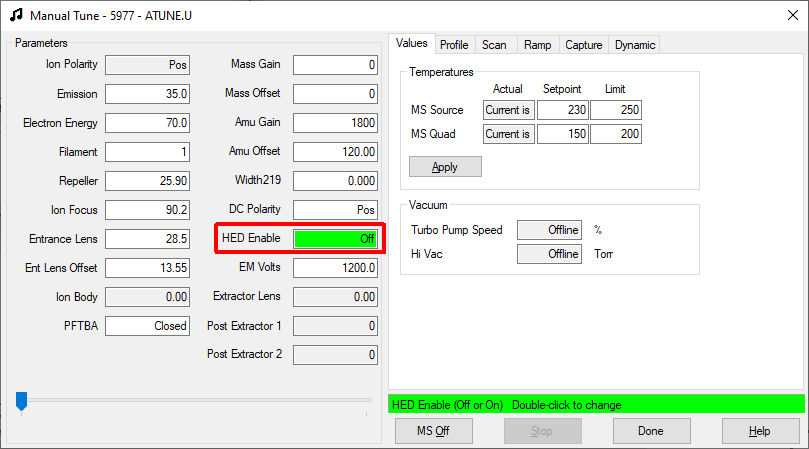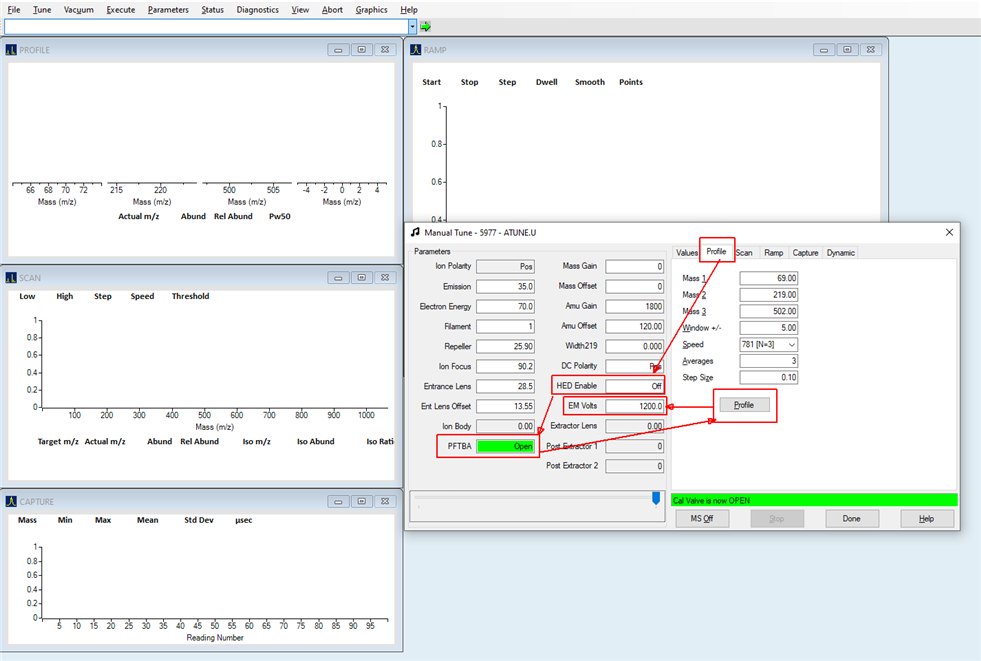
Autotune performed on a 5977 GCMS. Autotune finishes to completion but is obviously not acceptable. Source cleaned and replaced with new filaments. Both filaments give similar results. Autotune file replaced with default. No differences observed.
GCMS instrument configuration performed. Tune performed with similar bad results. Instrument was used 3 weeks prior with no issues. Electronic (board) issues? Any suggestions appreciated.



